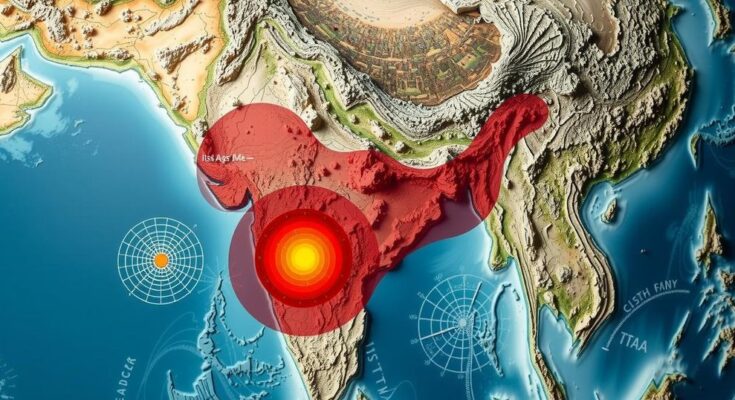India experienced a severe earthquake measuring 7.1 in magnitude near its northern border with Tibet on January 7, 2025. This event underscores India’s vulnerability to earthquakes, ranking as the seventh most impacted country with 58 major quakes recorded from 1990 to early 2024, according to NOAA data. The geographical positioning at converging tectonic plates significantly contributes to this susceptibility.
A significant earthquake measuring 7.1 in magnitude struck southern Tibet, close to the Nepal border, on January 7, 2025, with tremors reaching northern India, including Bihar. This event marked the strongest seismic activity in the region since the disastrous April 2015 earthquake in Nepal, which led to thousands of fatalities. While many Asian countries are highly susceptible to seismic events, the data reveals that India ranks as the seventh most earthquake-prone nation, having experienced 58 major earthquakes from 1990 to January 2024. According to the National Oceanic and Atmospheric Administration, India faces considerable risk due to its location at the junction of several tectonic plates, making it vulnerable to significant seismic activity.
The propensity for earthquakes in various regions, particularly in Asia, has long been a topic of concern. Among the most affected countries, China and Indonesia are noted for their considerable seismic activity, with China leading in the number of major earthquakes resulting in significant damage since 1990. India’s precarious geographical positioning and heightened population density further exacerbate its earthquake vulnerability. The data provided by authoritative bodies such as the National Oceanic and Atmospheric Administration outlines the countries that have endured numerous severe earthquakes from 1990 to early 2024.
In summation, India holds the position of the seventh most earthquake-prone country globally, having recorded 58 significant earthquakes between 1990 and January 2024. This highlights the ongoing risk and challenges presented by seismic activities in the region. The recent earthquake in January 2025 serves as a poignant reminder of the pressing need for preparedness and effective regulation regarding construction and land use in seismic zones.
Original Source: indianexpress.com




